Class 12: Economics (Microeconomics) Chapter 6 solutions. Complete Class 12 Economics (Microeconomics) Chapter 6 Notes.
Contents
NCERT Solutions for 12th Class Economics (Microeconomics): Chapter 6-Non-Competitive Markets
NCERT 12th Economics (Microeconomics) Chapter 6, class 12 Economics (Microeconomics) chapter 6 solutions
1. What would be the shape of the demand curve so that the total revenue curve is
(a) a positively sloped straight line passing through the origin?
(b) a horizontal line?
(a) The slope of the demand curve will be a horizontal line parallel to x-axis when revenue curve is positively sloped straight line
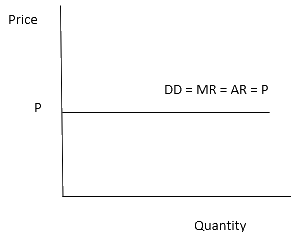
(b) Demand curve will be downward sloping when revenue curve is a horizontal line
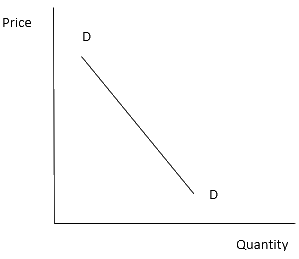
2. From the schedule provided below calculate the total revenue, demand curve and the price elasticity of demand:
| Quantity | 1 | 2 | 3 | 4 | 5 | 6 | 7 | 8 | 9 |
| Marginal Revenue | 10 | 6 | 2 | 2 | 2 | 0 | 0 | 0 | −5 |
Solution for this question is as follows:
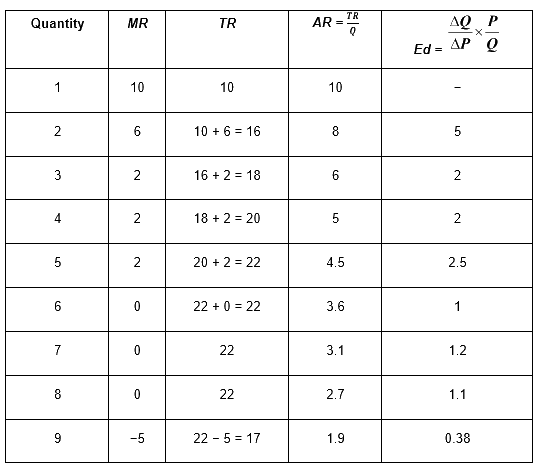
3. What is the value of the MR when the demand curve is elastic?
MR and elasticity of demand are bound by this relationship where
MR = P (1 – 1/ed)
Therefore when demand curve will be elastic i.e. (ed > 1), the value of 1/ed will always be less than 1 and hence the MR will always be positive. It can be represented in a graph as:
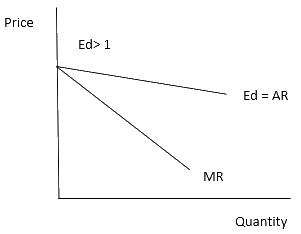
4. A monopoly firm has a total fixed cost of Rs 100 and has the following demand schedule:
| Quantity | 1 | 2 | 3 | 4 | 5 | 6 | 7 | 8 | 9 | 10 |
| Price | 100 | 90 | 80 | 70 | 60 | 50 | 40 | 30 | 20 | 10 |
Find the short run equilibrium quantity, price and total profit. What would be the equilibrium in the long run? In case the total cost is Rs 1000, describe the equilibrium in the short run and in the long run.
The solution for this question is as follows:
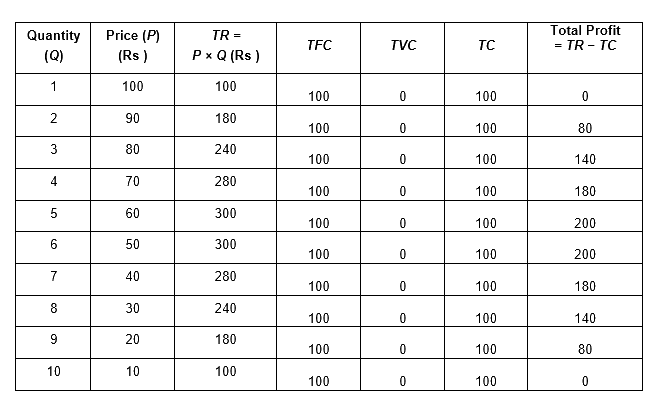
We know Total Cost (TC) = TFC + TVC
Let the total variable cost of the firm be 0
Profit will be maximum where TR (Total Revenue) is maximum and as per the table it is 6th unit of output that is providing maximum profit.
Therefore Short run equilibrium price is 50.
Now let’s calculate profit
Profit = TR-TC
= 300-100
=200
In short run, the level at which total revenue is maximum is used to determine equilibrium quantity, therefore 300 will be the equilibrium quantity.
Now, calculating profit in the long run
Profit= Total Revenue – Total Cost or TR – TC
= 300-1000
= -700
As per the numbers the firm is suffering losses in the long run.
NCERT 12th Economics (Microeconomics) Chapter 6, class 12 Economics (Microeconomics) chapter 6 solutions
5. If the monopolist firm of Exercise 3, was a public sector firm. The government set a rule for its manager to accept the government fixed price as given (i.e. to be a price taker and therefore behave as a firm in a perfectly competitive market), and the government decide to set the price so that demand and supply in the market are equal. What would be the equilibrium price, quantity and profit in this case?
A monopolist firm when asked to accept fixed prices by government will behave like a perfectly competitive firm. The price set by the government will make demand and supply equal and the firm will earn normal profit or zero economical profit.
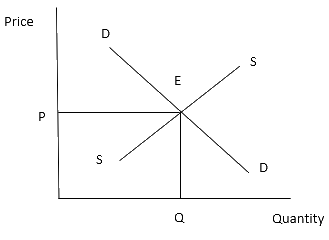
Therefore equilibrium price = P
Equilibrium quantity = Q
Profit = Normal Profit
6. Comment on the shape of the MR curve in case the TR curve is a
- positively sloped straight line
- horizontal straight line
i. The MR curve will be a horizontal line when TR curve is a positively sloped straight line. At the condition of perfect competition the MR and demand curve will be same with the AR constant for different output levels.
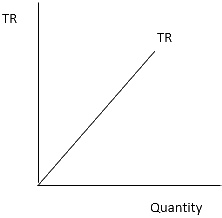
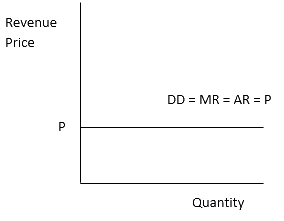
ii. The MR will be zero when the TR curve is a horizontal straight line. Horizontal slope of TR curve is representing the fact that MR (marginal revenue) is zero. It can be represented graphically as:
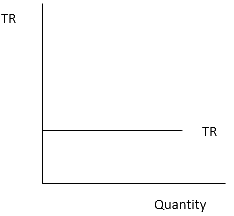

NCERT 12th Economics (Microeconomics) Chapter 6, class 12 Economics (Microeconomics) chapter 6 solutions
7. The market demand curve for a commodity and the total cost for a monopoly
firm producing the commodity is given by the schedules below.
| Quantity | 0 | 1 | 2 | 3 | 4 | 5 | 6 | 7 | 8 |
| Price | 52 | 44 | 37 | 3 | 26 | 22 | 19 | 16 | 13 |
| Quantity | 0 | 1 | 2 | 3 | 4 | 5 | 6 | 7 | 8 |
| Total Cost | 10 | 60 | 90 | 100 | 102 | 105 | 109 | 115 | 125 |
Use the information given to calculate the following:
(a) The MR and MC schedules
(b) The quantities for which MR and MC are equal
(c) The equilibrium quantity of output and the equilibrium price of the commodity
(d) The total revenue, total cost and total profit in the equilibrium
(a) The solution for this is as follows
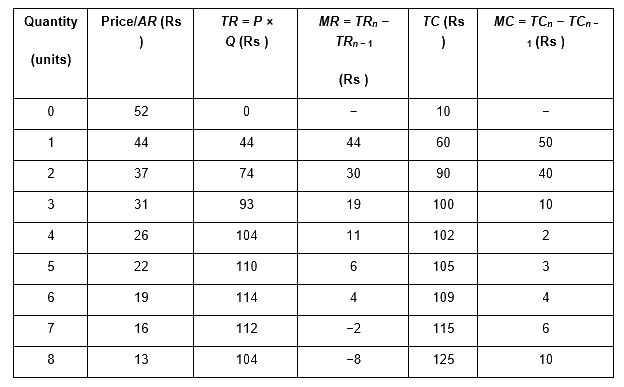
(b) MR and MC become equal at the 6th unit of output.
(c) MR= MC in the state of equilibrium, according to the table it is the 6th unit of output where MR= MC. Therefore the equilibrium price is 19.
(d) As 6th unit of output is where equilibrium is attained therefore TR= 114, TC= 109 and
Profit = 114-109
= 5
8. Will the monopolist firm continue to produce in the short run if a loss is incurred at the best short run level of output?
i) If the price of a product is less than the minimum average cost, the firm will incur losses in the short run.
ii) If the price falls below the average variable cost, the monopolist firm will stop all production.
iii) If the price is between the average variable cost and the average cost, the firm will continue production
9. Explain why the demand curve facing a firm under monopolistic competition is negatively sloped.
A firm in monopolistic competition sells products that are differentiated from its competitor’s product. Therefore, the monopolistic firm will lower the cost to increase the demand. Because the differentiated products can be substituted for each other, the demand for commodities produced under monopolistic competition tends to be elastic. This elastic demand is the reason why the demand curve is negatively sloped for a firm under monopolistic competition.
10. What is the reason for the long run equilibrium of a firm in monopolistic competition to be associated with zero profit?
A firm in monopolistic competition sells products that are differentiated from its competitor’s product. In other words, the products sold by a firm in monopolistic competition are unique and only have partial competition. Because of the free entry and exit of firms, the long-run equilibrium price will be the same and the firm will earn zero profit.
11. List the three different ways in which oligopoly firms may behave.
Oligopoly firms may behave in the following ways:
1. Firms realize that raging a price war will not sustain in the long run and therefore the main focus is on advertising the products and trying to differentiate their product from competitors so that it strikes a chord with the audiences.
2. Some firms may join hands to form cartels to maximise profit among themselves and capture a large part of market due to the combined effort.
3. Firms may decide on the quantity of output to be produced so that they can earn the maximum benefits, with a mutual agreement with other firms in limiting produce as per agreement.
12. If duopoly behaviour is one that is described by Cournot, the market demand curve is given by the equation q = 200 − 4p and both the firms have zero costs, find the quantity supplied by each firm in equilibrium and the equilibrium market price.
As per the question
q = 200 − 4p
The demand curve being a straight line and firms having zero costs, a duopolistic firm finds it best to supply goods amounting to half of the maximum demand in order to gain most profit.
Therefore at P= 0
Market demand is q = 200 − 4p
= 200- 4(0)
= 200
If firm B is not involved in any production. Then market demand for A will be 200 units. Accordingly the supply will be 200/2= 100 units (half of maximum market demand)
Firm B will face a market demand of 200-100= 100 units
Supply will be 100/2= 50 units
As firm B produced 50 units, A needs to have a demand of 200-50= 150 units
A will produce 150/2= 75 units in order to earn profits
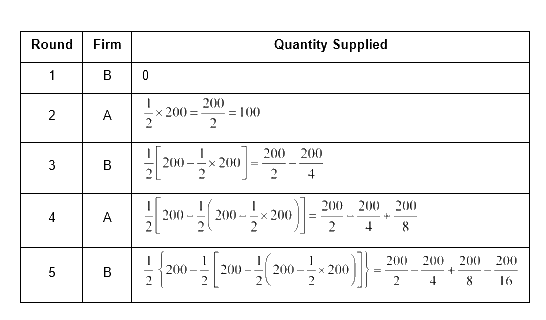
At equilibrium both the firms A and B will have an output of 200/3 units
Market supply will be =

Now Equilibrium output is 400/3
Calculating equilibrium price
q = 200 − 4p
4p = 200- q
p= 50- q/4

p = 50- 100/3
=

=

Therefore, the equilibrium price is 50/3
NCERT 12th Economics (Microeconomics) Chapter 6, class 12 Economics (Microeconomics) chapter 6 solutions
13. What is meant by prices being rigid? How can oligopoly behaviour lead to such an outcome?
Price rigidity refers to the situation in which price does not change with respect to demand. It may happen that a firm changes its price by more units to earn high profits, similar firms in the same industry will not do the same due to the fear of losing out profit. While a firm if it reduces the price to increase sales and profits. The other firm will soon follow the steps to share total market sales. Therefore oligopoly will lead to price rigidity in the market.
- Market – A market refers to a procedure or a technique that enables correspondence between the buyers and sellers for the sale and purchase of goods and services.
- Monopoly – It is a type of market where there exists a single seller of a product with no close competitors.
NCERT Solutions for 12th Class Economics (Microeconomics): Chapter 6: Download PDF
NCERT Solutions for 12th Class Economics (Microeconomics): Chapter 6-Non-Competitive Markets
Chapterwise NCERT Solutions for Class 12 Economics (Microeconomics):
- Chapter 1 – Introduction to Micro Economics
- Chapter 2 – Theory of Consumer Behaviour
- Chapter 3 – Production and Costs
- Chapter 4 – The Theory of the Firm under Perfect Competition
- Chapter 5 – Market Equilibrium
- Chapter 6 – Non-competitive Markets
About NCERT
The National Council of Educational Research and Training is an autonomous organization of the Government of India which was established in 1961 as a literary, scientific, and charitable Society under the Societies Registration Act. Its headquarters are located at Sri Aurbindo Marg in New Delhi. Visit the Official NCERT website to learn more.
